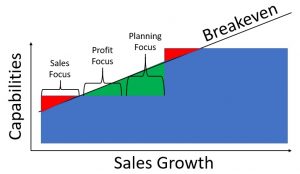
Video productions come in many shapes and sizes, from the iPhone video you post on Facebook all the way up to major Hollywood productions. So, crews range from that person with an iPhone all the way up to a cast of hundreds (and sometimes even thousands). But despite that wide range, I have a piece of advice that fits almost all of them. If you’re hiring a production company, or even a do-it-all photojournalist, insist that they have a tested video production process.
Videos are just too complex to “do it on the fly.” Whether you have a script and actors or a news/documentary-style project, there are too many moving parts to leave to chance. Even a small-scale shoot (maybe an interview and some site video) requires many levels of coordination, not to mention editing, post-production, and delivery. So, unless you really enjoy doing project management without a net, you need a tested video production process.
At StoryTeller, our process includes these steps:
- Research:
Understand Stories and Objectives
- Pre-Production Meeting
- Strategic Vision:
Story identification, Storyboarding, Planning and Shoot Prep
- Newsgathering:
Shoot Interviews and B-Roll Video
- Content Creation:
Logging, Scripting, Producing and Editing
- Content Review:
Edits, Revisions, Approvals
Different production companies and videographers may have different processes, but the bottom line is that our process not only allows us to do our best work, but gives our clients a predictable pace and dependable results. Basically, a tested video production process ensures quality and accountability.
Here are four of the benefits of a tested video production process.
Dependability
Whether you’re shooting on location, in a studio, at your office, or at a friend’s home, there are a lot of moving pieces that have to come together. Does the time and place work for all members of the crew? How about actors or spokespeople? What’s the right place in the first place? Identifying all of these details is crucial, and if you don’t do it in a logical, systematic fashion, some of these moving pieces won’t ever fit together.
Predictable Timeline
Video productions take time. You don’t just pick up a camera one day and have a video in your hands the next — unless we’re talking about one of those simple iPhone shots, and you wouldn’t be hiring a professional for that. So, how much planning time do you need before the shoot and how much editing time afterwards? In other words, how do you know when you’re going to get your video? It’s only guesswork, unless you have a real process. And since that process probably has a timeline built into it, you go from getting a pure guess to an accurate prediction. Trust me, with the pressure of most video productions, that kind of predictability is worth its weight in gold.
Accurate Pricing
Speaking of pricing, most production rates are based on time. The more hours required to plan, shoot, and edit the project, the more it costs. And when you add extra days or crew members, that obviously adds to the total time (and price). But how can you give any kind of estimate if you don’t know what you’re estimating? Sure, you might get lucky and get quoted a lowball price, but if the work doesn’t fit the estimate do you know you won’t get billed for the overage? Do you want to take that chance? I’d like to know the legitimate price up-front.
Fewer Revisions
At StoryTeller, we get a lot of value from our process because it leads to fewer revisions. When you nail down a client’s objectives in the research process, when you discuss all the ways to get there in the pre-production meeting, and when the planning and execution of the video all match that vision, you don’t end up with many revisions. On the other hand, if you go through that whole process without a real process, I feel sorry for you. Fixing those problems with a series of extra editing sessions is a project I don’t want any part of, and neither should you.
Digital & Social Articles on Business 2 Community
(42)







